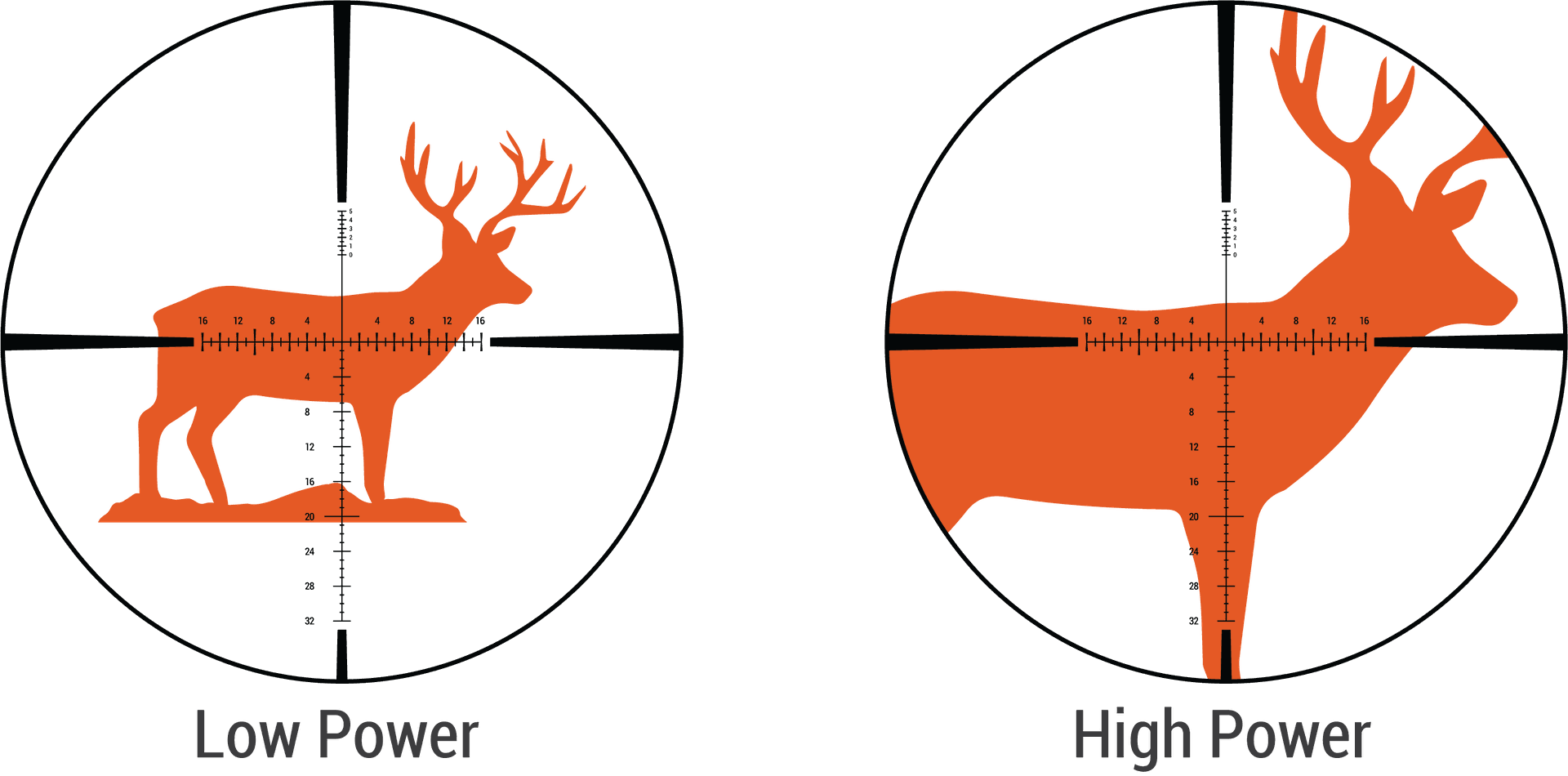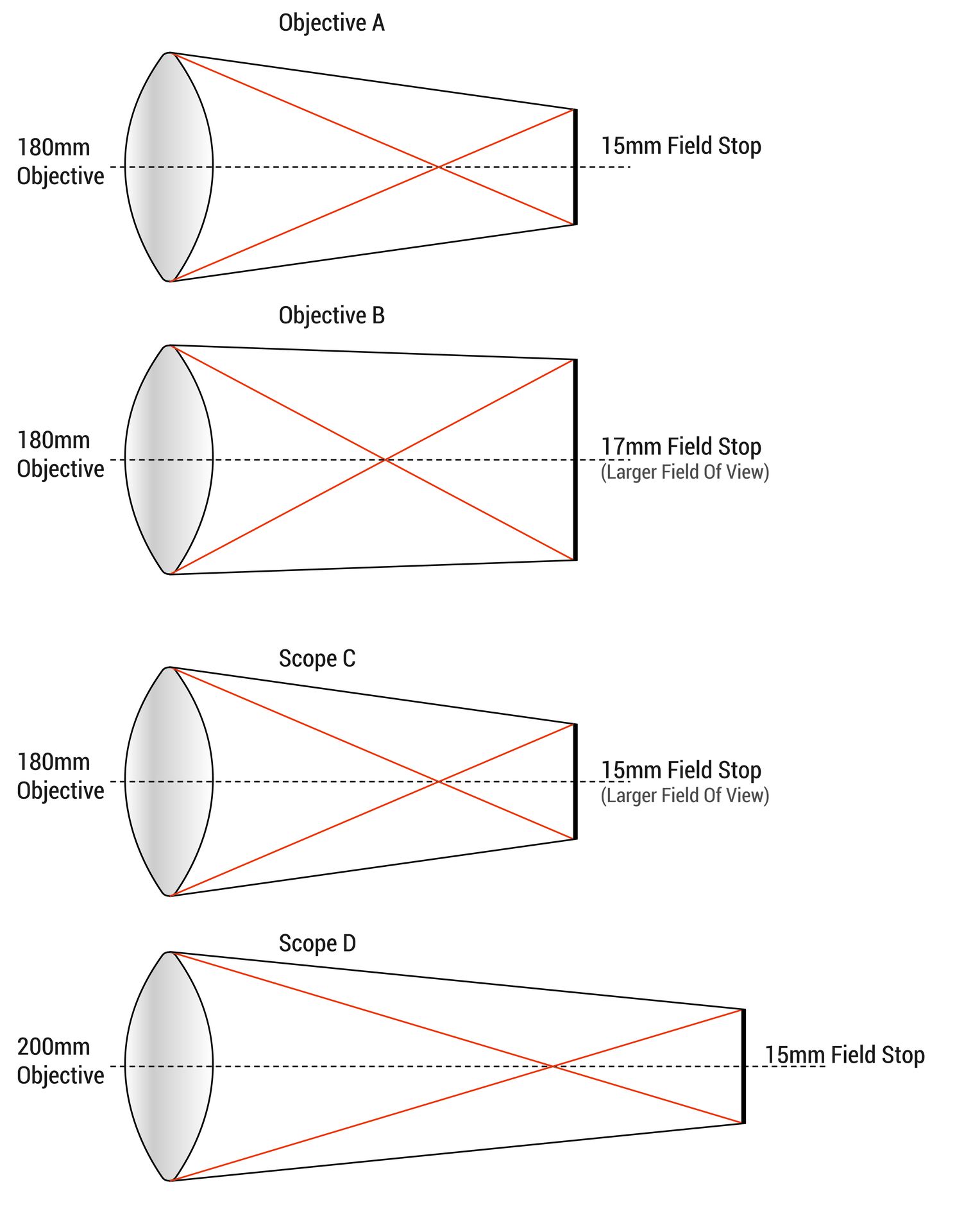Field of view describes the size of the viewing area as you look into the eyepiece from the right to the left edges of the scopes field stop. It is described as either an angle in degrees or number of feet or meters at a specific distance. For example, a scope with a 6-degree field of view is equivalent to a field of view equal to 10.5 yards at 100 yards.
As you can see above, the farther away you are from your object of interest, you see less detail, but more of its surroundings, and vice versa, the closer you are, the more detail, but less of the surroundings. So the trade-off for Field Of View (FOV) is: More power = More detail = Less FOV and Less Power = Less Detail = More FOV.
If a scope is designed properly one can see both edges of the field stop when the eye is centered in the exit pupil. However, if you place your eye too far inside or outside the field stop you will cut out some of the field which can be described as “looking through a note hole”. In this condition, the field is said to be Vignetted.
Why some scopes have a different field of view for the same magnification
Different manufacturers of rifle scopes, for a given magnification, might have different sized fields of view. The field size is affected by both the focal length of its objective lens, and/or the size of the field stop at the eyepiece. For a given field stop size a shorter focal length objective will provide a larger field angle. However, shorter focal length objectives require optics with a proportionally shorter focal length eyepiece to maintain the same magnification.
For example, an objective lens with a focal length of 200mm may have a field of view of 6 degrees and an objective with a focal length of 180mm can have a field of view of 6.7 degrees assuming the field stop is the same size. The other possibility would be that both scopes have an objective of 180mm focal length with one having a field stop size of 15mm the other with a field stop size of 17mm diameter. In this case, the scope with the larger field stop will allow a larger field of view.
Below is a representation of scopes with different objectives and/or field stops providing different fields of view. Scope A has a larger field stop so will have a larger field of view than scope B. In this example only the field stop is different. Scope C has a shorter focal length objective and consequently a larger field of view than scope D. However the eyepieces of scopes C and D must be proportionally different to have the same magnification.

The larger field objectives require different design complexities. Shorter focal length objectives require better correction of spherical, coma, and field curvature aberrations. Another disadvantage is that the erector system has to pass larger bundles of rays meaning the main or outer tube diameter might need to be increased.
If designed for quality performance, high-end scopes more commonly provide more field of view for a given power. Larger field of view scopes will be more compact because the product has to use shorter focal length lens components. If done correctly these products will be heavier for a given volume because of the added glass elements. Because of design and manufacturing limitations on the early development of rifle scopes their lengths were much longer for a given magnification as compared to modern scopes with more sophisticated lens systems.
Summary
Generally, the field of view in a scope is determined by the magnification combined with the focal length of the objective/eyepiece combination. For this reason, for a given magnification various manufacturers commonly have fields of view slightly different. The diameter of the objective lens is not a factor in determining the field of view. Larger fields of view require more sophisticated lens systems in order to maintain good imagery.
